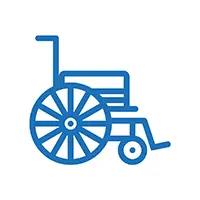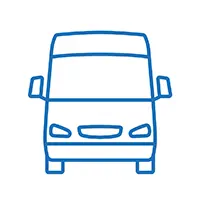Published 01 November 2019
Having a truly inclusive business is good for everybody. It means people with impairments can have the same access as non-disabled people, while your business benefits from their custom.
Here are 10 ways to make your retail business accessible.
Bron from Be Free Grocer talks about how she made her store accessible.
1. Have staff attend a Disability Responsiveness Workshop
The biggest barriers for people with disabilities aren’t necessarily physical. People’s attitudes are the biggest limitation. You can have a space that ticks all the right boxes for accessibility, but if your people don’t understand how to respond appropriately to people with disabilities it will be wasted.
To avoid this, make sure your staff are trained in disability responsiveness. Attending a workshop by Disability Responsiveness NZ is a great way to do this. These workshops are designed to train staff to respond appropriately to people with disabilities. This includes things like using inclusive language, understanding the cultural context of disability, and how to assist people with specific impairments.
Find out about Disability Responsiveness Workshops (external link)
2. Make sure entrances are wide and clear
Ensure that the main entrances are level and clear of obstacles. There should be at least 1200mm of clear space either side of the entrance.
Entrances should be level. This is important for people using a wheeled mobility aid so they don’t roll when trying to open or close the door.
Entrances should be at least 810mm wide, but 850mm is better. Official guidelines suggest a minimum of 760mm, but this was set in 2001 and has since been found to be too narrow for larger mobility aids to go through easily.
Doors should be easy to open. The door opening pressure should be no greater than 8lbs for external non-fire doors, and 5lbs for internal non-fire doors. Many people with disabilities struggle to push or pull doors, and if the pressure is set too high, they might injure themselves.
3. Leave plenty of room around displays
There should be a clear route of at least 1200mm around all your displays. This width allows for people using a wide range of mobility aids.
Some wheelchairs and mobility scooters require a turning circle of more than 1500mm.
Wide aisles and plenty of room around displays means items are accessible to everyone
4. Make everything highly visible
Make sure the lighting in your space is adequate. This is important for people with visual impairments and people who lip read.
Incorporate contrasting colours throughout the store to help partially sighted people identify objects. For example, use different colours between a benchtop and its edges, or between the top of a step and the front. You can also do this by using contrasting patterns or using lighting.
5. Try to minimise noise
Ensure that noise levels are not too loud to be of concern for people who have sensory challenges.
Too much background noise can affect people with attention deficit disorders or those with hearing impairments or using hearing aids. It can also be a challenge for people on the autism spectrum.
Sound in a room can be dampened by using soft furnishings and curtains, or installing sound absorbing panels. If this is not realistic, consider having a regular “quiet hour”, a period of time when noise levels are lowered for people with sensory challenges.
6. Have a lowered counter
Counters in many businesses are at a height of around 1200mm. At this height, people of short stature or in a seated mobility aid may struggle to be served, or even seen.
A good height for both standing and seated people is 900mm. If this isn’t possible, a two-tiered counter is a good idea, with a higher level and a lower level. Just make sure that neither is seen as the main part of the counter, and that both are clearly visible when approaching.
At minimum, ensure that there is either a lowered section on the counter or a shelf that a person in a wheelchair or of short statue can use.
Reception counters and desks should be designed so that people with disabilities are able to carry out the normal processes and activities expected at the counter or desk.
Make sure payment terminals are mounted at no higher than 1200mm. Ideally, the payment terminal will be cordless so it can be easily accessed by everyone.
A low counter means everyone is able to conduct sales transactions easily
7. Ensure dressing rooms are accessible
If you’re a clothing retailer, make sure you have accessible dressing rooms that meet these requirements:
- Floor area must allow for a turning circle of at least 1500mm
- Coat hooks should be provided at a height of between 1000mm to 1350mm
- A bench seat should be installed at 430mm to 485mm high with back support and arm rest preferred
- The door should swing out. If it swings in then the floor area will need to be need to increased
8. Put displays at the right height
Displays should be mounted at no higher than 1200mm. If there are higher displays, such as in clothing stores, ensure that staff are available to assist.
The common reachable height for a person in a wheelchair and an ambient person is between 700mm and 1200mm.
9. Ensure signs are clear and concise
Signs should be informative, directional and locational, using the international symbol of access (ISA) to indicate accessible features.
Informative signage means people with disabilities can easily see whether accessible facilities are provided. For example, placing the ISA next to a sign with the word ‘toilet’ indicates that a building contains an accessible toilet. This is important because a person’s independence is enhanced when they don’t have to ask whether a building is accessible.
Directional signage is that which shows a person where an accessible feature is. This could involve the use of arrows or distance measurements to indicate where a feature is located.
Locational signage identifies the accessible feature itself. For example, if a toilet is accessible it should have the ISA label somewhere on or near the door.
Learn about how to use accessible signs and symbols correctly (external link)
10. Have an accessible website
Ensure that your website is accessible to people with disabilities, including those using assistive technologies such as screen readers, screen magnifiers, and switch controls.
This means if you have pictures on your website, include a meta description describing the picture so people who are visually impaired can enjoy the site fully.
Conclusion
Making your retail store accessible is one of the most important things you can do. Being inclusive of everyone, regardless of their ability, is great for business. By considering the requirements of people with impairments your store will be uncluttered, easy to navigate, and visually attractive. These are qualities all customers care about, whether they are disabled or not.
















